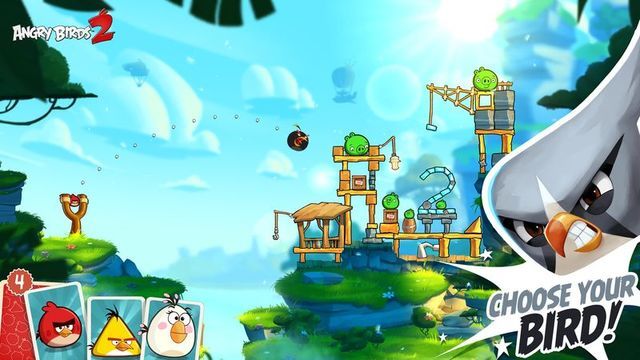2009’s mobile gaming market was different. Angry Birds was optionally free, supported by ads. There were full versions, one SD the other HD, $1 or $3 respective to the device/version. In only six years, every bit of that pricing model seems alien. “Pricing” in general is alien, actually.
Angry Birds was an oddball. It escaped traditional games media until it could no longer be ignored. In 2009, Nintendo’s waggling Wii was puttering out and the slow descent into nothingness that were Facebook games drew interest, but never the successes which came before. In hindsight, snarky stories about Zynga’s collapse and the Wii’s gluttonous need for mini-game collections appear like defense mechanisms – no way these pithy farming games and motion games could garner more interest Gears of War.
And then they did.

In what seemed like mere weeks, Android and iOS platforms spurred the lean Angry Birds’ concept of fowl versus pig into as much relevancy as Pac-Man versus ghosts or Mario versus Bowser. Pesky yet accessible casual gameplay mechanisms – pull back, let go, smash stuff – won over same-y, eight-button duck-and-cover war shooters. The market said so.
Pay to break stuff
The next shift followed when studios cannibalized their own designs to dribble in a new face: free-to-play. It remains a crooked, shifty means of profit laundering which has led to “free” micro-army simulations landing $4 million Super Bowl ads and knock-off Kung-Fu Panda action RPGs stitched into the mat during Ronda Rousey’s UFC 190 title defense (and a follow-up ad). Consumers no longer pay for games; they pay for objects or digital currency, neither of which actually exist outside of profits in the millions per day.
Therein sits Angry Birds 2. The idea of a seperate “HD” version is laughable and a paid edition more so. Replacing the ads is a currency (gems) and sucking the life out is a lives system – pun so, so intended. In place of rapid restarts is a series of invasive “please share stuff on Facebook,” desperate calls to rate the app, or “watch this video” prompts. There are more pop-up intrusions than in a shady corner of the internet, nine pages deep in a Google search.
“We gave you this free thing so help us,” is the translation. Never mind the theme park, animated movie, T-shirts, plushies, board games, and breakfast cereal the $3 original built because $3 is now too much.
Infuriated Fowl
It’s a shame: Angry Birds 2 is beautiful. Lush, gorgeous, vivid; those words are merely marketing jargon, if admittedly absolutely correct. Watercolor-esque backgrounds and hard cartoon lines carry a personality. Angry Birds was a take away of the Flash-based Crash the Castle – a reason for “smart” insiders to brush Angry Birds off (another defense mechanism) – but ignored how critical personality is in reaching an audience.
Unidentifiable knights attacking an ill-defined castle this is not. Angry Birds 2 overwhelms with character. Close-ups of birds waiting to pounce; terrified pigs waiting for their inevitable crushing; taunting on both sides for the victors; they’re wonderful touches. That mischevious theme song is suitably remixed too. Add more birds, more power-ups, more… stuff, and a mobile sequel is born. A notable one too.
The game is a widely appealing cutie. Developer Rovio understands the marketability but appears utterly flummoxed by their own success. After understandably selling the Birds out to mingle with Star Wars, Transformers, and others, it would appear their own design philosophy was lost in the popularity swell. That, or targeted mobile audiences are okay with the constant intrusions to buy one off, digitally fabricated items now. It’s an audience used to this form. So maybe this aversion to mobile’s befuddling pay-to-win landscape is a defense mechanism and maybe Angry Birds 2 will become an icon too. Nothing is surprising anymore.









Published: Aug 6, 2015 05:19 pm